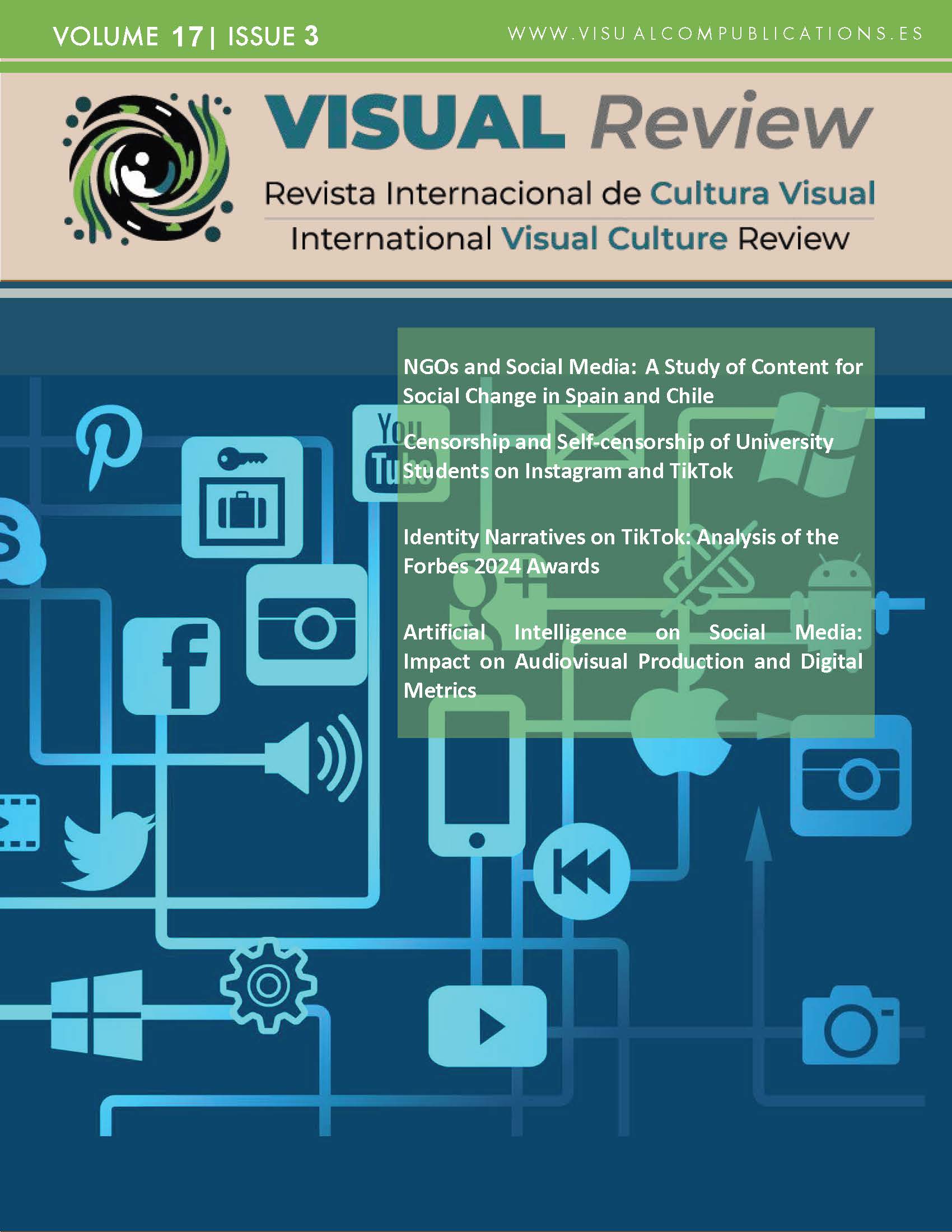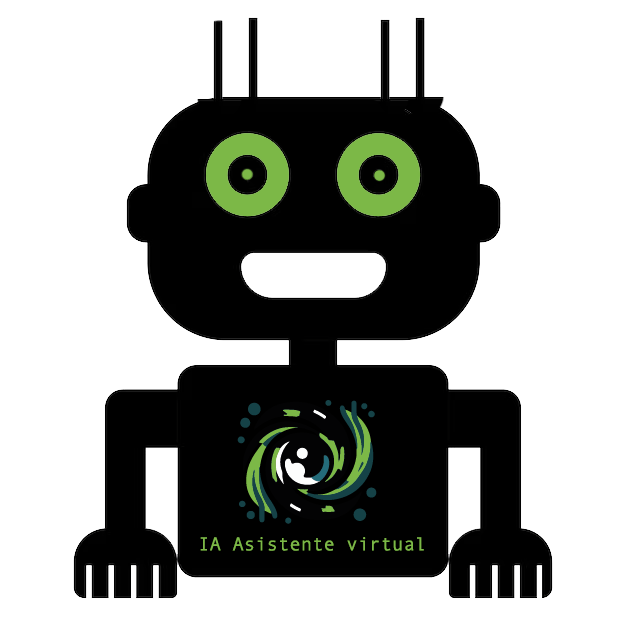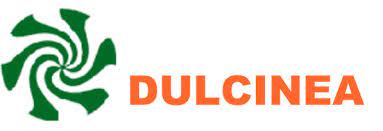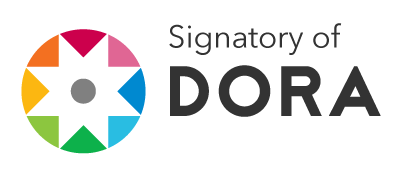Simulators As Visual Aids To Reinforce Courses In Automation And Industrial Robotics
DOI:
https://doi.org/10.62161/revvisual.v17.5905Keywords:
Automation courses, Visual adis, Simulators, Simulation, EducationAbstract
The basic automation courses present in various engineering careers,
have seen the need to implement new methodologies that bring students
closer to real practice. During the pandemic, the need to implement
teaching methodologies such as simulation based on visual aids to
achieve this objective was observed. That is why this literature review
aims to generate a scope on the use of simulators in automation courses,
and to present the simulators that have been successfully used in the
teaching of this course, in addition to highlighting the advantages of its
use in education.
Downloads
Global Statistics ℹ️
|
517
Views
|
304
Downloads
|
|
821
Total
|
|
References
Alemany, J. (2011). DESIGN OF HIGH QUALITY, EFFICIENT SIMULATION ENVIRONMENTS FOR USARSIM [Universitat Jaume I]. http://repositori.uji.es DOI: https://doi.org/10.2316/P.2011.752-033
Ankamma, K., Reddy, S., Reddy, S. M., & Pavan, J. (2020). Sequencing of PLC-Based pneumatic system using AUTOSIM-200. Science, Technology and Development, 9(9). https://www.researchgate.net/publication/362667669
ANUIES. (2020). Crisis por pandemia evidenció necesidad de simuladores en la educación a distancia. http://www.anuies.mx/noticias_ies/crisis-por-pandemia-evidenci-necesidad-de-simuladores-en-la-educacin
Balaguer, B., Balakirsky, S., Carpin, S., Lewis, M., & Scrapper, C. (2008). USARSim: a validated simulator for research in robotics and automation. Workshop on Robot Simulators: Available Software, Scientific Applications, and Future Trends at IEEE/RSJ.
Beaubien, J. M. (2004). The use of simulation for training teamwork skills in health care: how low can you go? Qual Saf Health Care, 13(1), 51–56. https://doi.org/10.1136/qshc.2004.009845 DOI: https://doi.org/10.1136/qhc.13.suppl_1.i51
Bedillion, M., & Nizar, N. M. (2015). Virtual laboratories using simulink: a pilot study. 2015 ASEE Annual Conference & Exposition, 1–12. https://peer.asee.org/virtual-laboratories-using-simulink-a-pilot-study
Benela, R. A., & Jamuna, K. (2013). Design of charging unit for electric vehicles using solar power. 2013 International Conference on Information Communication and Embedded Systems, ICICES 2013, 919–924. https://doi.org/10.1109/ICICES.2013.6508236 DOI: https://doi.org/10.1109/ICICES.2013.6508236
Bin, B. M. (2014). Antenna Rotator design and control [Bachelor]. Universiti Teknologi PETRONAS.
Buckley, C., & Nerantzi, C. (2020). Effective Use of Visual Representation in Research and Teaching within Higher Education. International Journal of Management and Applied Research, 7(3), 3–197. https://doi.org/10.18646/2056.54.cfp008 DOI: https://doi.org/10.18646/2056.73.20-014
Byrne, J. A. (2016). Improving the peer review of narrative literature reviews. https://doi.org/10.1186/s41073-016-0019-2 DOI: https://doi.org/10.1186/s41073-016-0019-2
Cabero-Almenara, J., & Costas, J. (2016). La utilización de simuladores para la formación de los alumnos. Revista Prisma Social, 17, 343–372. https://revistaprismasocial.es/article/view/1288
Campos, N., Nogal, M., Caliz, C., & Juan, A. A. (2020). Simulation-based education involving online and on-campus models in different European universities. International Journal of Educational Technology in Higher Education, 17, 8. https://doi.org/10.1186/s41239-020-0181-y DOI: https://doi.org/10.1186/s41239-020-0181-y
Carpin, S., Lewis, M., Wang, J., Balakirsky, S., & Scrapper, C. (2007). USARSim: a robot simulator for research and education. Proceedings 2007 IEEE International Conference on Robotics and Automation, 1400–1405. DOI: https://doi.org/10.1109/ROBOT.2007.363180
Castillo, M. D. (2019). Supervisió i Control d’un Procés de Fabricació sobre una Cèl·lula Automatitzada Memòria i Annexos Autor [Bachelor’s thesis]. Universitat Politècnica de Catalunya.
Chávez, D. J. (2020). Implementation and validation of tracking control on a real manufacturing system [Master en Ciencias, Instituto Tecnologico y de Estudios Superiores de Monterrey]. In repositorio.tec.mx. https://repositorio.tec.mx/handle/11285/640768
Chichekian, T., Trudeau, J., & Tawfiq Jawhar, ·. (2022). Disrupted Lessons in Engineering Robotics: Pivoting Knowledge Transfer From Physical to Virtual Learning Environments. Journal of Science Education and Technology, 31(3), 555–569. https://doi.org/10.1007/s10956-022-09973-0 DOI: https://doi.org/10.1007/s10956-022-09973-0
Chiluisa-Chiluisa, M. A., Lucio Ramos, Y. J., Velásquez Campo, F. R., Chiluisa-Chiluisa, M. A., Lucio Ramos, Y. J., & Velásquez Campo, F. R. (2022). Tinkercad como herramienta estratégica en el proceso de aprendizaje significativo. Horizontes Revista de Investigación En Ciencias de La Educación, 6(25), 1759–1767. https://doi.org/10.33996/REVISTAHORIZONTES.V6I25.451 DOI: https://doi.org/10.33996/revistahorizontes.v6i25.451
Coronel, B. A. S., & Ortega, E. M. I. (2022). Innovación en Educación en Base a Cursos en Línea como Opción Formativa y Autoaprendizaje. https://pure.ups.edu.ec/es/publications/innovaci%C3%B3n-en-educaci%C3%B3n-en-base-a-cursos-en-l%C3%ADnea-como-opci%C3%B3n-for
Erduran, S., & Kaya, E. (2018). Drawing Nature of Science in Pre-service Science Teacher Education: Epistemic Insight Through Visual Representations. Research in Science Education, 48(6), 1133–1149. https://doi.org/10.1007/S11165-018-9773-0/FIGURES/9 DOI: https://doi.org/10.1007/s11165-018-9773-0
Factory I/O. (n.d.). About Factory I/O. Retrieved March 30, 2024, from https://docs.factoryio.com/
Faíña, A. (2022). Learning Hands-On Electronics from Home: A Simulator for Fritzing. International Conference on Climbing and Walking Robots and the Support Technologies for Mobile Machines. https://doi.org/10.48550/ARXIV.2206.07146
Farrow, D., & LeMaster, R. (2006). Automatton laboratory development enhances student learning. ASEE Annual Conference and Exposition, Conference Proceedings. https://doi.org/10.18260/1-2--22 DOI: https://doi.org/10.18260/1-2--22
Ferreira, P., Malheiro, B., Silva, M., Guedes, P., Justo, J., Ribeiro, C., & Duarte, A. (2022). TEACHING EMBEDDED/IOT TO ALL ENGINEERS. http://repositorio.inesctec.pt/bitstreams/23448dd3-4c3c-47d2-a86e-c42332192754/download
Fritzing Blog. (2022, June 27). Simulating Circuits with Fritzing. https://blog.fritzing.org/
Gomez, C. A., Haidee, M., Jaramillo, Y., Castrillón, A. S., & Camperos, A. G. (2022). Factory I/O As Simulation Software For Teaching The Subject Of Programmable Logic Controllers At UFPSO. Webology, 19(6). http://www.webology.org
Goncalves, P. F., SÃi, J., Coelho, A., & Durães, J. (2020). An Arduino Simulator in Classroom- A Case Study. OpenAccess Series in Informatics, 81. https://doi.org/10.4230/OASICS.ICPEC.2020.12
Han, A., Wohn, K., & Ahn, J. (2021). Towards new fashion design education: learning virtual prototyping using E-textiles. International Journal of Technology and Design Education, 31(2), 379–400. https://doi.org/10.1007/S10798-019-09558-W/METRICS DOI: https://doi.org/10.1007/s10798-019-09558-w
Home I/O. (n.d.). About Home I/O. Retrieved April 2, 2024, from https://docs.realgames.co/homeio/en/
Ile, N., & Lotric, U. (2018). FTsim: A 3D tool for teaching automation concepts. 13th APCA International Conference on Control and Soft Computing, CONTROLO 2018 - Proceedings, 31–36. https://doi.org/10.1109/CONTROLO.2018.8514259 DOI: https://doi.org/10.1109/CONTROLO.2018.8514259
Kalyani, D., research, K. R. applied and advanced, & 2018, undefined. (2018). Innovative teaching and learning. Scholar.Archive.OrgD Kalyani, K RajasekaranJournal of Applied and Advanced Research, 2018•scholar.Archive.Org, 2018(3), 23–25. https://doi.org/10.21839/jaar.2018.v3S1.162 DOI: https://doi.org/10.21839/jaar.2018.v3iS1.162
Lai, A. F., Chen, C. H., & Lai, H. Y. (2018). Developing an arduino simulation-based learning system and evaluating its suitability. ACM International Conference Proceeding Series, 38–42. https://doi.org/10.1145/3241748.3241764 DOI: https://doi.org/10.1145/3241748.3241764
Li, L., Lin, M., Wang, X., Bao, P., & Li, Y. (2020). Preparing and responding to 2019 novel coronavirus with simulation and technology-enhanced learning for healthcare professionals: challenges and opportunities in China. BMJ Simulation & Technology Enhanced Learning, 6(4), 196. https://doi.org/10.1136/BMJSTEL-2020-000609 DOI: https://doi.org/10.1136/bmjstel-2020-000609
Liu, L., & Hu, J. (2012). The practice of MATLAB simulation in modern control theory course teaching. 2012 IEEE Fifth International Conference on Advanced Computational Intelligence(ICACI), 896–899. https://doi.org/10.1109/ICACI.2012.6463300 DOI: https://doi.org/10.1109/ICACI.2012.6463300
Malaga, M., & Ulrych, Z. (2021). Training factories s principy Industry 4.0 v průmyslovém inženýrství. https://doi.org/10.24132/PI.2021.07927.133-149 DOI: https://doi.org/10.24132/PI.2021.07927.133-149
Michelena Grandío, Á., Casteleiro-Roca, J. L., Jove Pérez, E., Quintián Pardo, H., Zayas-Gato, F., & Calvo-Rolle, J. L. (2023). Diseño de prácticas de control virtuales con MatLab y Factory I/O. 161–171. https://doi.org/10.17979/SPUDC.000016.161 DOI: https://doi.org/10.17979/spudc.000016.161
Okamoto, S., Saga, S., Kurose, K., Ohno, K., & Tadokoro, S. (2014). Validation of Simulated Robots with Realistically Modeled Dimensions and Mass in USARSim. https://doi.org/10.1109/SSRR.2008.4745881 DOI: https://doi.org/10.1109/SSRR.2008.4745881
Pereira, C. E., Paladini, S., & Schaf, F. M. (2012). Control and automation engineering education: Combining physical, remote and virtual labs. International Multi-Conference on Systems, Signals and Devices, SSD 2012 - Summary Proceedings. https://doi.org/10.1109/SSD.2012.6197908 DOI: https://doi.org/10.1109/SSD.2012.6197908
Philippot, A., Riera, B., Koza, M., Pichard, R., Saddem, R., Gellot, F., & Annebicque, D. (2017). HOME I/O and FACTORY I/O 2 Pieces of innovative PO simulation software for automation education. 2017 27th EAEEIE Annual Conference (EAEEIE), 1–6. https://realgames.co/home-io/ DOI: https://doi.org/10.1109/EAEEIE.2017.8768639
Rehg, J. (2020). Plcs In The New Automation Laboratory. 7.920.1-7.920.6. https://doi.org/10.18260/1-2--11275 DOI: https://doi.org/10.18260/1-2--11275
Riera, B., Emprin, F., Annebicque, D., Riera, B., Emprin, F., Annebicque, D., Colas, M., & Vigário, B. (2016). HOME I/O: a virtual house for control and STEM education from middle schools to Universities. https://www.researchgate.net/publication/303814420 DOI: https://doi.org/10.1016/j.ifacol.2016.07.172
Riera, B., Maze, C., Debernard, S., Philippot, A., Galaup, M., Panzoli, D., Renard, D., Pettinelli, B., & Eynard, B. (2022). Hybridization of automation practical courses. IFAC Symposium on Advances in Control Education (ACE), IFAC, 115–120. https://doi.org/10.1016/j.ifacol.2022.09.266ï DOI: https://doi.org/10.1016/j.ifacol.2022.09.266
Riera, B., Philippot, A., & Annebicque, D. (2019). Teaching the first and only logic control course with HOME I/O and Scratch 2.0. IFAC-PapersOnLine, 52(9), 109–114. https://doi.org/10.1016/J.IFACOL.2019.08.133 DOI: https://doi.org/10.1016/j.ifacol.2019.08.133
Riera, B., & Vigário, B. (2017). HOME I/O and FACTORY I/O: a virtual house and a virtual plant for control education. IFAC-PapersOnLine, 50(1), 9144–9149. https://doi.org/10.1016/J.IFACOL.2017.08.1719 DOI: https://doi.org/10.1016/j.ifacol.2017.08.1719
Seo, H.-H., Kim, J.-W., Kim, D.-H., & Park, S.-H. (2022). Internet of Things Simulation Learning Model Based on Virtual Remote Input Output. Journal of Computational and Theoretical Nanoscience, 18(5), 1423–1428. https://doi.org/10.1166/JCTN.2021.9615 DOI: https://doi.org/10.1166/jctn.2021.9615
Simulink 3D Animation. (n.d.). Retrieved March 31, 2024, from https://la.mathworks.com/products/3d-animation.html
SMC International Training. (n.d.). autoSIM-200 - Automation Simulator. Retrieved April 2, 2024, from https://www.smctraining.com/en/webpage/indexpage/335
Tran, T. K., Yahoui, H., & Siauve, N. (2019). An interactive approach to teach automation in the training of the industry 4.0. 2019 13th International Conference on Software, Knowledge, Information Management and Applications, SKIMA 2019. https://doi.org/10.1109/SKIMA47702.2019.8982491 DOI: https://doi.org/10.1109/SKIMA47702.2019.8982491
Tupac-Yupanqui, M., Vidal-Silva, C. L., Sánchez-Ortiz, A., & Pereira, F. (2021). Experiencias y beneficios del uso de Arduino en un curso de programación de primer año. 14(6), 87–96. https://doi.org/10.4067/S0718-50062021000600087 DOI: https://doi.org/10.4067/S0718-50062021000600087
Tuyen, N. T. (2022). On an application in supporting practical teaching of IoT course and embedded programming. Global Journal of Engineering and Technology Advances, 2022(03), 39–044. https://doi.org/10.30574/gjeta.2022.13.3.0199 DOI: https://doi.org/10.30574/gjeta.2022.13.3.0199
Vargas, H., Heradio, R., Donoso, · Matias, & Farias, · Gonzalo. (2023). Teaching automation with Factory I/O under a competency-based curriculum. Multimedia Tools and Applications, 82, 19221–19246. https://doi.org/10.1007/s11042-022-14047-9 DOI: https://doi.org/10.1007/s11042-022-14047-9
Virtual Breadboard. (n.d.). Introducing VBB Windows Store App. Retrieved April 1, 2024, from https://www.virtualbreadboard.com/docs
Widianto, M. H., & Cahaya Putra, V. H. (2023). Utilization of Wokwi Simulation Application in Supporting Internet of Things Learning (IoT). Proceedings of 2023 International Conference on Information Management and Technology, ICIMTech 2023, 807–812. https://doi.org/10.1109/ICIMTECH59029.2023.10277981 DOI: https://doi.org/10.1109/ICIMTech59029.2023.10277981
Yaremchenko, Y., Parkhomenko, A., Tulenkov, A., Parkhomenko, A., Zalyubovskiy, Y., Sokolyanskii, A., & Gladkova, O. (2020). Virtual Environment for Internet of Things Technologies Studying.
Zupančič, F. (2020). Univerza v Ljubljani Fakulteta za računalništvoraˇračunalniračunalništvo in informatiko Odprtokodna orodja za vodenje industrijskih procesov [Tesis Doctoral]. University of Ljubljana.
Downloads
Published
How to Cite
Issue
Section
License
Copyright (c) 2025 Authors retain copyright and transfer to the journal the right of first publication and publishing rights

This work is licensed under a Creative Commons Attribution-NoDerivatives 4.0 International License.
Those authors who publish in this journal accept the following terms:
-
Authors retain copyright.
-
Authors transfer to the journal the right of first publication. The journal also owns the publishing rights.
-
All published contents are governed by an Attribution-NoDerivatives 4.0 International License.
Access the informative version and legal text of the license. By virtue of this, third parties are allowed to use what is published as long as they mention the authorship of the work and the first publication in this journal. If you transform the material, you may not distribute the modified work. -
Authors may make other independent and additional contractual arrangements for non-exclusive distribution of the version of the article published in this journal (e.g., inclusion in an institutional repository or publication in a book) as long as they clearly indicate that the work was first published in this journal.
- Authors are allowed and recommended to publish their work on the Internet (for example on institutional and personal websites), following the publication of, and referencing the journal, as this could lead to constructive exchanges and a more extensive and quick circulation of published works (see The Effect of Open Access).













